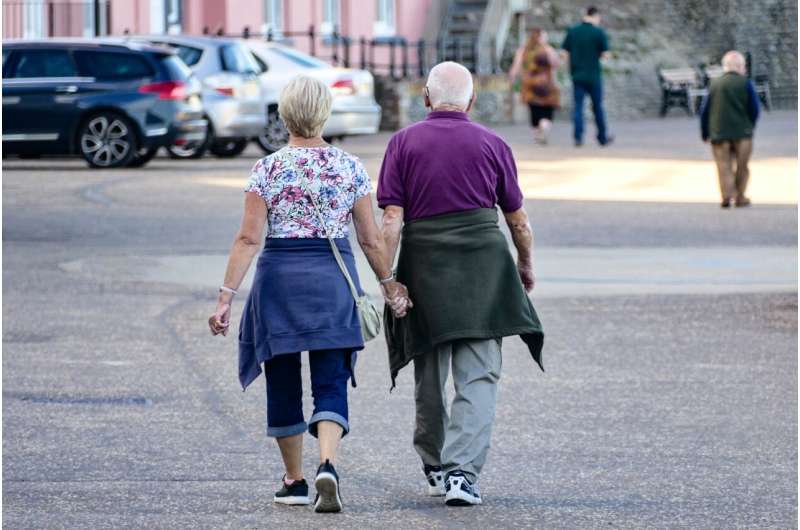California Collaborative Effort Enhances COVID-19 Response and Promotes Health Equity, Study Reports

A new report highlights how the California alliance of universities and community organizations successfully enhanced COVID-19 response efforts and advanced health equity through community-led collaboration and innovative evaluation methods.
The COVID-19 pandemic revealed stark disparities across different communities, with communities of color—including Latino (including undocumented individuals), Black, and Native American populations—as well as low-income groups seeing significantly higher rates of infection, hospitalization, and mortality. These disparities were exacerbated by factors such as overcrowded housing, densely populated neighborhoods, systemic racism, discrimination, and unstable employment conditions, which increased vulnerability to the virus.
A comprehensive new report, published in the journal Health Expectations, sheds light on the pivotal role played by the Share, Trust, Organize, Partner COVID-19 California Alliance (STOP COVID-19 CA) in addressing these challenges. Established in 2020 as part of the federal pandemic response framework, the alliance brought together 11 universities—including the University of California, Riverside—and over 75 community organizations spanning 14 counties. The goal was to reach the most affected populations, increase access to accurate information, boost testing and vaccination efforts, and lay groundwork for lasting health equity.
According to Ann Cheney, a senior author of the report and a professor at UC Riverside School of Medicine, the network strengthened collaborations between communities and researchers, effectively tackling health inequalities during the pandemic. She emphasized that the network’s community-first approach allowed local organizations and grassroots leaders to take leadership roles, shaping research questions, collecting data, and co-authoring reports. This approach ensured initiatives remained rooted in the cultural and socioeconomic realities of the communities involved.
Between August 2020 and December 2021, the alliance undertook massive outreach efforts, surveying over 11,000 Californians, organizing numerous focus groups, participating in clinical trials, and hosting hundreds of community events—including town halls and vaccination clinics. Community health workers, known as promotoras, played an essential role in crafting and delivering culturally appropriate health messages.
To evaluate its impact, the alliance employed Ripple Effects Mapping in 2024, a participatory evaluation method. This assessment demonstrated that the network not only enhanced COVID-19 response efforts but also improved communication, strengthened partnerships, and fostered sustainable skills for future collaborations. Cheney highlighted that lasting relationships were built through mutual respect and shared purpose, with community partners leading efforts rather than merely participating.
The report underscores that the experience of STOP COVID-19 CA is a model for how academic institutions and communities can work together to promote health equity. It illustrates how such partnerships can help reshape public health responses to serve marginalized populations better, addressing social determinants like housing, employment, and systemic barriers.
Cheney remarked that integrating local knowledge with academic expertise proved effective in managing the crisis and that the network's success sets the stage for ongoing community involvement in health research. The collaboration's foundation in trust and shared goals fostered deeper engagement and more impactful outcomes, making it a blueprint for addressing health disparities across diverse communities.
The report's authors include scholars from UC Riverside and UC San Diego, along with community partners such as Conchita Servicios de la Comunidad in Mecca and the Global Action Research Center in San Diego.
This initiative has demonstrated that when communities are recognized as equal partners and leaders, health interventions are more successful and enduring, ultimately contributing to greater health equity and resilience in the face of future public health emergencies.
For more detailed information, see the original study: Evelyn Vázquez et al., "Ripple Effects Mapping: Evaluating Multilevel Perspectives and Impacts of a Statewide Community–Academic Partnership Network on Covid-19 Health Disparities," Health Expectations (2025).
Stay Updated with Mia's Feed
Get the latest health & wellness insights delivered straight to your inbox.
Related Articles
How Geographic Location Influences Health Risks in Older Adults: New Research Findings
New research shows that regional factors at the state and county levels significantly influence health risks and outcomes for older adults, highlighting the importance of geographic context in health disparities.
FDA Recalls Six Popular Acne Products Due to Benzene Contamination
The FDA has recalled six popular acne treatments after tests revealed dangerous benzene contamination. This chemical, linked to cancer, forms when benzoyl peroxide breaks down, raising safety concerns. Learn more about the risks and safety measures.
Innovative Pan-Cancer Immunotherapy Targets Tumors Without Damaging Healthy Tissue
A novel glycan-targeting immunotherapy from UC Irvine shows promise in effectively destroying diverse cancers while preserving healthy tissue, paving the way for universal cancer treatment.



